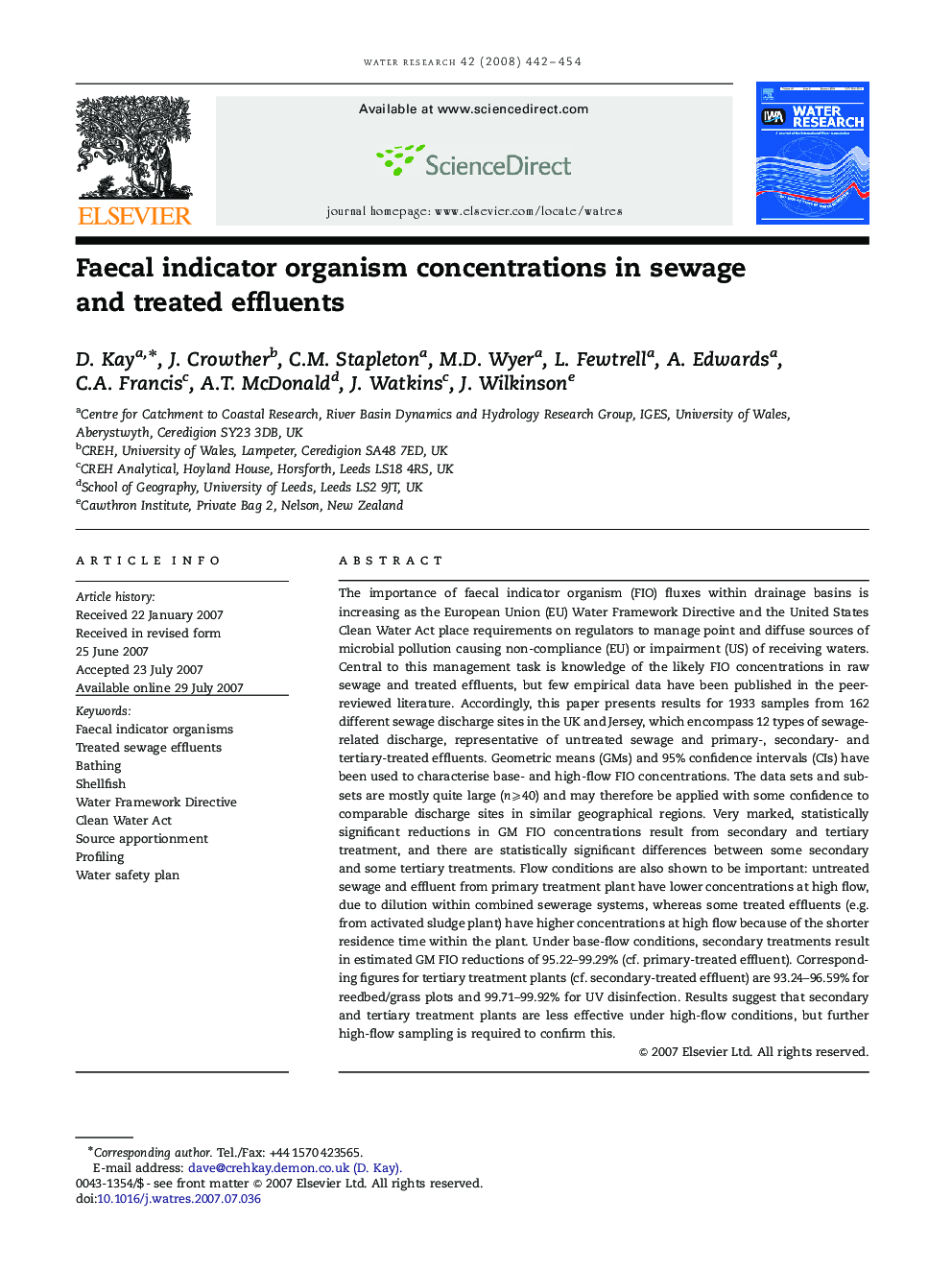| کد مقاله | کد نشریه | سال انتشار | مقاله انگلیسی | نسخه تمام متن |
|---|---|---|---|---|
| 4485779 | 1623125 | 2008 | 13 صفحه PDF | دانلود رایگان |

The importance of faecal indicator organism (FIO) fluxes within drainage basins is increasing as the European Union (EU) Water Framework Directive and the United States Clean Water Act place requirements on regulators to manage point and diffuse sources of microbial pollution causing non-compliance (EU) or impairment (US) of receiving waters. Central to this management task is knowledge of the likely FIO concentrations in raw sewage and treated effluents, but few empirical data have been published in the peer-reviewed literature. Accordingly, this paper presents results for 1933 samples from 162 different sewage discharge sites in the UK and Jersey, which encompass 12 types of sewage-related discharge, representative of untreated sewage and primary-, secondary- and tertiary-treated effluents. Geometric means (GMs) and 95% confidence intervals (CIs) have been used to characterise base- and high-flow FIO concentrations. The data sets and sub-sets are mostly quite large (n⩾40) and may therefore be applied with some confidence to comparable discharge sites in similar geographical regions. Very marked, statistically significant reductions in GM FIO concentrations result from secondary and tertiary treatment, and there are statistically significant differences between some secondary and some tertiary treatments. Flow conditions are also shown to be important: untreated sewage and effluent from primary treatment plant have lower concentrations at high flow, due to dilution within combined sewerage systems, whereas some treated effluents (e.g. from activated sludge plant) have higher concentrations at high flow because of the shorter residence time within the plant. Under base-flow conditions, secondary treatments result in estimated GM FIO reductions of 95.22–99.29% (cf. primary-treated effluent). Corresponding figures for tertiary treatment plants (cf. secondary-treated effluent) are 93.24–96.59% for reedbed/grass plots and 99.71–99.92% for UV disinfection. Results suggest that secondary and tertiary treatment plants are less effective under high-flow conditions, but further high-flow sampling is required to confirm this.
Journal: Water Research - Volume 42, Issues 1–2, January 2008, Pages 442–454